
How to Use Step Up: Examples, Pinouts, and Specs
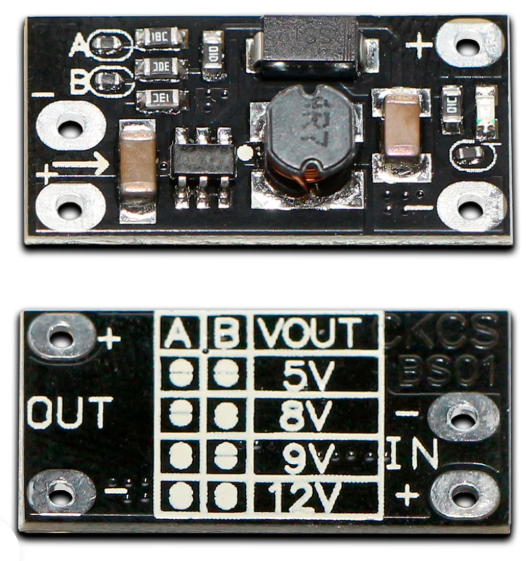
 Design with Step Up in Cirkit Designer
Design with Step Up in Cirkit DesignerIntroduction
A Step Up converter, also known as a boost converter, is a DC-DC converter designed to increase the input voltage to a higher output voltage while maintaining power. Manufactured by Arduino, this component is widely used in applications where a higher voltage is required from a lower voltage source. It is an essential component in battery-powered devices, renewable energy systems, and portable electronics.
Explore Projects Built with Step Up
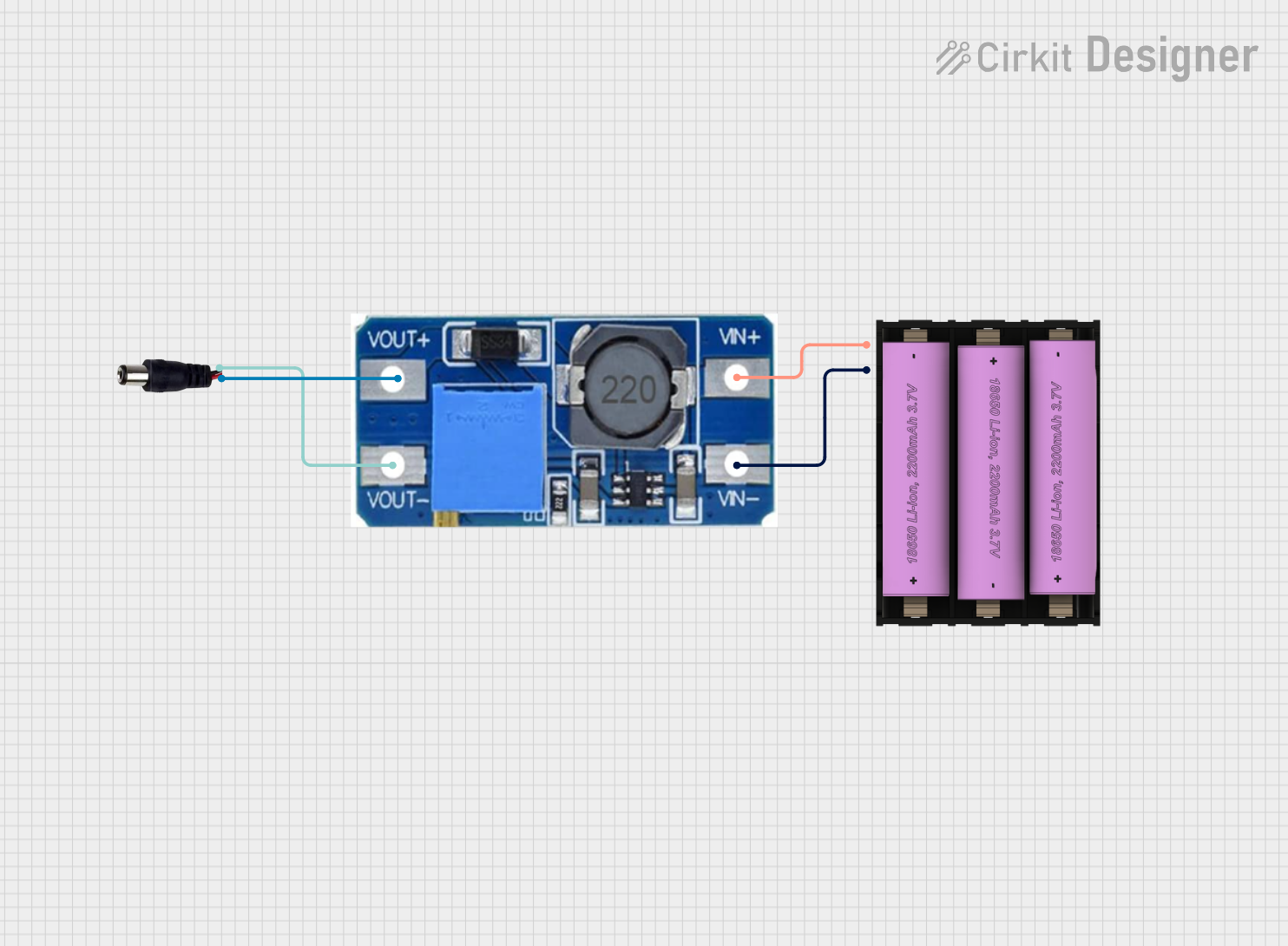
 Open Project in Cirkit Designer
Open Project in Cirkit Designer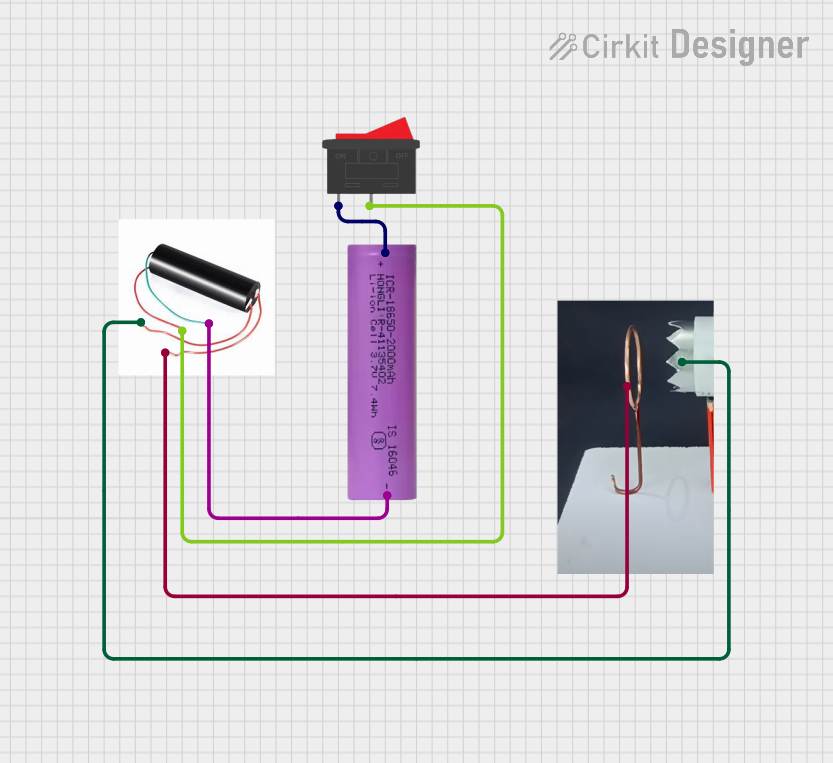
 Open Project in Cirkit Designer
Open Project in Cirkit Designer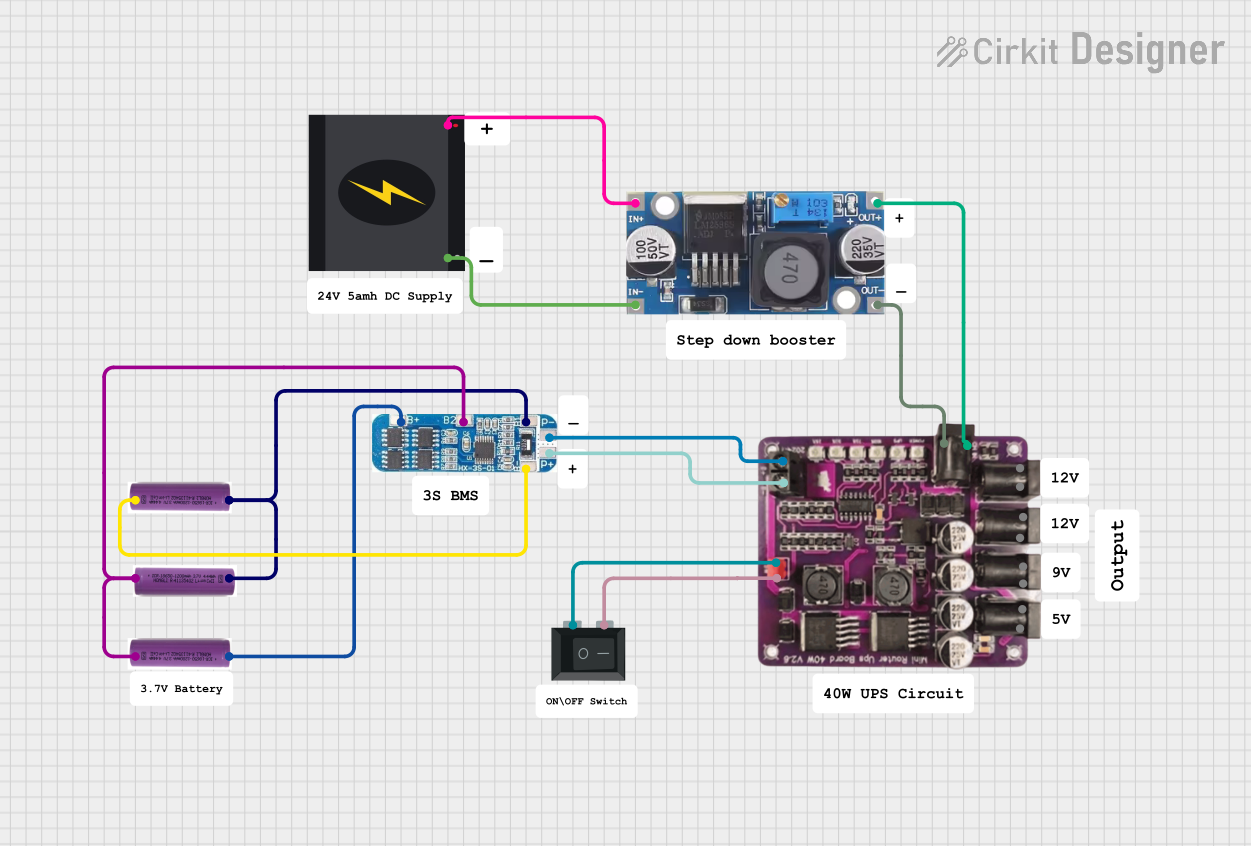
 Open Project in Cirkit Designer
Open Project in Cirkit Designer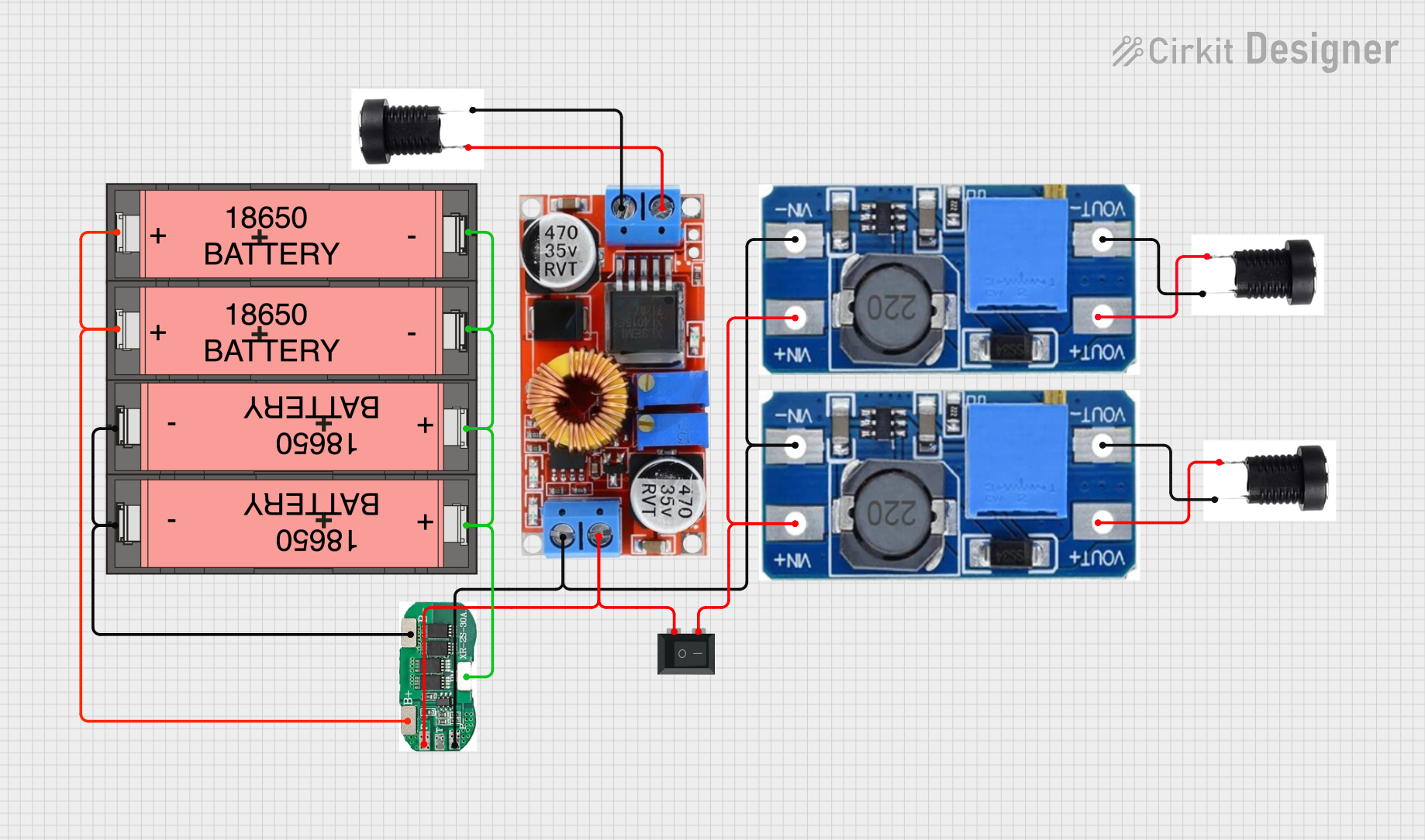
 Open Project in Cirkit Designer
Open Project in Cirkit DesignerExplore Projects Built with Step Up

 Open Project in Cirkit Designer
Open Project in Cirkit Designer
 Open Project in Cirkit Designer
Open Project in Cirkit Designer
 Open Project in Cirkit Designer
Open Project in Cirkit Designer
 Open Project in Cirkit Designer
Open Project in Cirkit DesignerCommon Applications and Use Cases
- Powering devices requiring higher voltage from a low-voltage battery (e.g., 3.7V to 12V).
- Solar power systems to step up the voltage from solar panels.
- LED drivers for high-power LEDs.
- Portable power banks and USB chargers.
- Robotics and embedded systems requiring stable higher voltage.
Technical Specifications
Below are the key technical details of the Arduino Step Up converter:
| Parameter | Value |
|---|---|
| Input Voltage Range | 2V to 24V |
| Output Voltage Range | 5V to 28V |
| Maximum Output Current | 2A (depends on input voltage) |
| Efficiency | Up to 95% |
| Switching Frequency | 150 kHz |
| Operating Temperature | -40°C to +85°C |
| Dimensions | 22mm x 17mm x 4mm |
Pin Configuration and Descriptions
The Arduino Step Up converter typically has four pins or terminals:
| Pin/Terminal | Description |
|---|---|
| VIN | Input voltage terminal (connect to power source). |
| GND | Ground terminal (common ground for input and output). |
| VOUT | Output voltage terminal (connect to the load). |
| EN (optional) | Enable pin (used to turn the converter on/off). |
Usage Instructions
How to Use the Step Up Converter in a Circuit
Connect the Input Voltage (VIN):
- Attach the positive terminal of your power source (e.g., battery) to the VIN pin.
- Connect the negative terminal of the power source to the GND pin.
Set the Desired Output Voltage:
- Use the onboard potentiometer (if available) to adjust the output voltage.
- Measure the output voltage using a multimeter while turning the potentiometer.
Connect the Load:
- Attach the positive terminal of your load to the VOUT pin.
- Connect the negative terminal of your load to the GND pin.
Enable the Converter (if applicable):
- If the converter has an EN (enable) pin, connect it to a HIGH signal (e.g., 5V) to activate the converter. Leave it unconnected or connect it to GND to disable the converter.
Important Considerations and Best Practices
- Input Voltage Range: Ensure the input voltage is within the specified range (2V to 24V). Exceeding this range may damage the converter.
- Output Voltage Adjustment: Always adjust the output voltage without a load connected to avoid overvoltage damage to the load.
- Heat Dissipation: At high currents, the converter may generate heat. Use proper heat sinks or ensure adequate ventilation.
- Current Limitations: Do not exceed the maximum output current (2A). Exceeding this limit may cause overheating or failure.
- Polarity Protection: Double-check the polarity of the input and output connections to avoid damage.
Example: Using the Step Up Converter with Arduino UNO
Below is an example of using the Step Up converter to power a 12V motor from a 5V Arduino UNO power source.
Circuit Connections
- Connect the 5V pin of the Arduino UNO to the VIN pin of the Step Up converter.
- Connect the GND pin of the Arduino UNO to the GND pin of the Step Up converter.
- Adjust the Step Up converter to output 12V using the potentiometer.
- Connect the VOUT pin of the Step Up converter to the positive terminal of the motor.
- Connect the negative terminal of the motor to the GND pin of the Step Up converter.
Arduino Code Example
// Example code to control a 12V motor using a Step Up converter and Arduino UNO
const int motorPin = 9; // PWM pin connected to motor driver or Step Up output
void setup() {
pinMode(motorPin, OUTPUT); // Set motorPin as an output
}
void loop() {
analogWrite(motorPin, 128); // Set motor speed to 50% (PWM value: 128 out of 255)
delay(5000); // Run motor for 5 seconds
analogWrite(motorPin, 0); // Stop the motor
delay(5000); // Wait for 5 seconds before restarting
}
Note: Ensure the motor driver or load is compatible with the output voltage and current of the Step Up converter.
Troubleshooting and FAQs
Common Issues and Solutions
No Output Voltage:
- Check the input voltage and ensure it is within the specified range.
- Verify all connections, especially VIN and GND.
- If the converter has an EN pin, ensure it is connected to a HIGH signal.
Output Voltage is Incorrect:
- Adjust the potentiometer to set the correct output voltage.
- Ensure the input voltage is sufficient to achieve the desired output voltage.
Overheating:
- Reduce the load current if it exceeds the maximum rating.
- Improve ventilation or add a heat sink to the converter.
Load Not Powering On:
- Verify the polarity of the output connections.
- Check if the load requires more current than the converter can provide.
FAQs
Q: Can I use the Step Up converter with a solar panel?
A: Yes, as long as the solar panel's output voltage is within the input voltage range of the converter.
Q: How do I calculate the input current required for a specific output?
A: Use the formula:
[
I_{in} = \frac{V_{out} \times I_{out}}{V_{in} \times \text{Efficiency}}
]
Ensure the input source can provide the required current.
Q: Can I use the Step Up converter to power sensitive electronics?
A: Yes, but add a capacitor at the output to reduce voltage ripple and ensure stable operation.
Q: What happens if I exceed the maximum output current?
A: The converter may overheat, shut down, or become permanently damaged. Always stay within the specified limits.